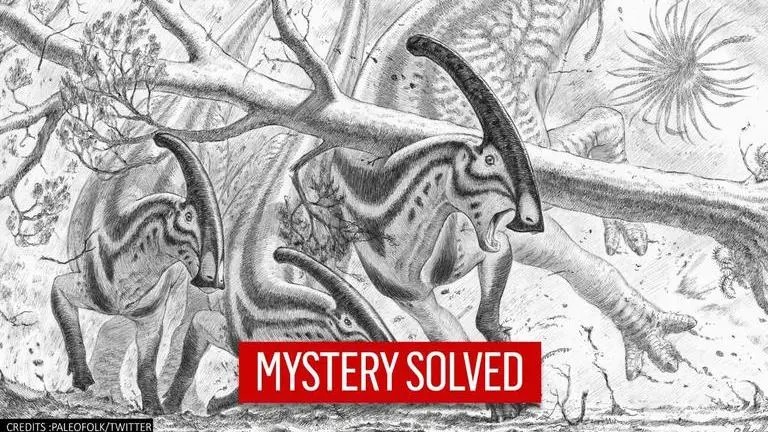Updated 3 December 2020 at 18:57 IST
UK PhD student discovers ‘iconic’ Netflix dinosaur may have killed by falling tree
A PhD student from School of Natural and Built Environment at Queen’s University revealed that Parasaurolophus dinosaur might've been killed by a falling tree.
- Entertainment News
- 3 min read

A PhD student from the School of Natural and Built Environment at Queen’s University, Belfast, recently revealed that Parasaurolophus dinosaur might have been killed by a falling tree. The duck-billed dinosaur, which is also known as ROM 768, had featured in the famous Netflix series ‘Jurassic World: Camp Cretaceous’. Since being discovered in Alberta, Canada, in 1920, the skeleton has been on display at the Royal Ontario Museum.
According to a study published in Wiley Online Library, Filippo Bertozzo said that the dinosaur had suffered several major injuries before its death. Along with collaborators from institutions in Canada, Italy and Liverpool, Filippo established that the Parasaurolophus dinosaur a heavy object, possibly a tree, may have fallen on the animal during a storm. He said that his study using paleopathological markers, which help researchers study the diseases of ancient humans and fossil animals, means he is now fairly certain how the “iconic dinosaur” would have really looked.
He added, “ROM 768 suffered numerous injuries which suggest a major incident of trauma before its death and we think a heavy object such as a tree may have fallen on top of the animal, perhaps during a storm”.
Finally my first PhD paper is out! Just published today in Journal of Anatomy, we finally solve the long-lasting mistery about the "saddle" in the holotype of #Parasaurolophus, defining its pathological nature along with other problems. [1/x]https://t.co/05Fcv0ndMs pic.twitter.com/sU58Cj1wvt
— Filippo Bertozzo (@Paleofolk) December 2, 2020
Advertisement
Ornithopods were prone to injuries, diseases
Filippo said that the damage of the muscles resulted in a disc-shaped overgrowth on the tip on the bony part of one of its vertebrate in its neck. He added that this enabled his research team to reconstruct the anatomical structure of the neck, revealing that it was strong and muscular to support its head. Further, Filippo’s research has also shown that ornithopods, medium and large plant-eating dinosaurs, were prone to a range of injuries and diseases.
He said, “In the case of the ROM 768, torn muscles and broken bones were also evident in the pelvis, ribs and spine, while a lesion in the mouth may have been caused through the heavy object falling on it. The injuries were well-healed, however, demonstrating the resilience of the dinosaur who survived for several months or perhaps even some years after the event.”
Meanwhile, the shape of the dinosaur’s neck has been a source of intrigue to paleo-artists. Back in 1950, a Disney film ‘Fantasia’ also shows the dinosaur to have a thin neck with a frill, however, later artists portrayed the creature with a graceful, swan-like neck. Recently, the discovery of partially mummified dinosaurs suggested that the animal had a much bulkier neck.
Advertisement
Published By : Bhavya Sukheja
Published On: 3 December 2020 at 18:58 IST
